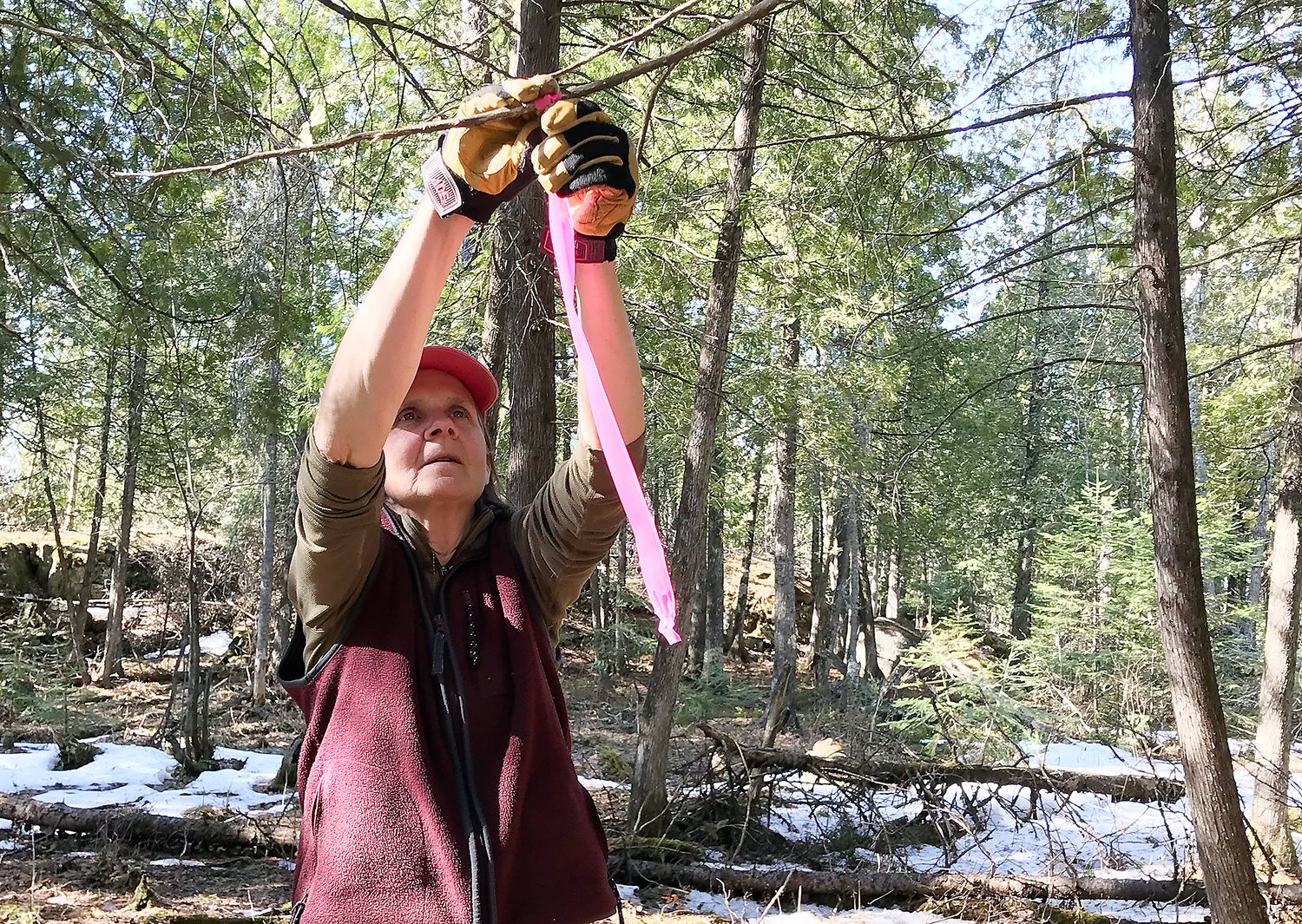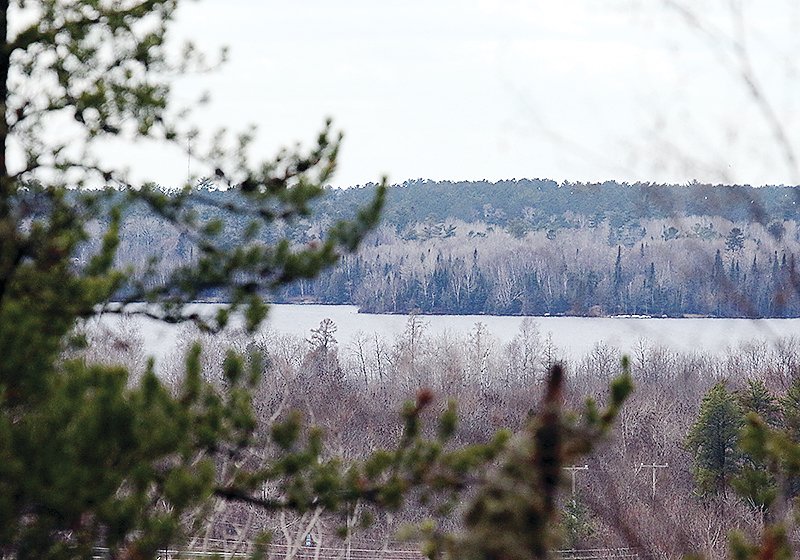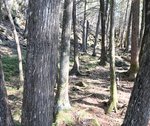Support the Timberjay by making a donation.
Ancient cedar trail planned
Remarkable forest stand will showcase “forest primeval” within Tower city limits
TOWER—The ribbons are being hung as part of the plan to build a long-anticipated trail here later this summer through a large and spectacular stand of old growth upland white cedar that dates back to about 1880.
To be known as the Ancient Cedar Forest Trail, the initial 1.5-mile long loop will traverse this remarkable site, which forest ecologists from the Department of Natural Resources believe most likely originated following a fire a few years prior to the opening of the Soudan Mine and several years before the founding of the city of Tower. The ecologists believe the site has never been logged, making it unusual, particularly for land located within the incorporated limits of a city.
The Wagoner Trails Club, the nonprofit Friends of Vermilion Country School, and the Tower Economic Development Authority are teaming up on the project both as a recreational option for local residents as well as a destination for visitors.
“This project has a number of benefits,” noted Jodi Summit, who heads Friends of Vermilion Country School. “It’s economic development, it’s environmental education, and it’s great recreation.” The most recent Tower-Breitung Comprehensive Plan listed a community desire for more recreational opportunities, particularly trails, so the project is consistent with that community vision, notes Summit.
While white cedar aren’t uncommon in Minnesota, they often grow in wet areas, making them less accessible to the general public. But Tower’s cedars grow in an upland area, making it easy to walk through the extensive grove, which covers more than 100 acres. The dense canopy created by the cedars gives a primeval feel to the stand, which is primarily open underneath since most underbrush doesn’t grow well in the deep shade.
While the trees are old, they aren’t as large as one might expect given their age. Cedar are slow-growing, long-lived trees, known to live up to 800 years. And in this relatively dry, rocky upland site near Tower, they’re even slower to grow. In this case, it’s the density of the cedars that is the most impressive characteristic of the site.
Wagoner Trails Club President Mary Shedd said she’s looking forward to the convenience of having such a resource right in town.
“Across the area, we have a lot of great hiking trails, but what’s so amazing about this is how close it is town. It’s literally right out our back door and it’s such an unique and special place. You don’t even have to get in your car for that kind of experience.”
The wilderness-type trail won’t cost much to build or maintain, since it will be little more than a narrow footpath along most of the route. But the first few hundred feet of the trail is consistently wet, so the trail developers plan to build about 500 feet of boardwalk through the wet area. Lake Country Power’s Operation Round-Up donated $2,000 toward the project in late February and the organizers are seeking about $4,400 more from the North St. Louis County Trails Task Force to help pay for the remaining materials to build the boardwalk. The request also includes funding for some interpretive and directional signage so people understand the significance of the site and how to find it. The task force committee will decide on the funding request later this month. The project would get underway most likely in July, with volunteers set to build and maintain the boardwalk as well as the rest of the trail.
The trailhead is tentatively set to be located about 300 feet south of the junction of the Mesabi Trail and the Iron Ore snowmobile trail. That’s about three blocks from the city’s historic train depot.
While much of the trail is relatively flat, a portion of the trail will run along a rocky ridge that offers scenic views of portions of the city of Tower and Lake Vermilion. The initial loop trail will eventually include spur trails and additional loops to scenic overlooks and other interesting features.
While many people will likely explore the trail in summer, Shedd said she thinks the site is even more spectacular in winter and she expects it will get plenty of use from snowshoers.
“When you see the snow draped on the trees and the cliffs, you know you’re in a pretty fantastic place,” she said.











